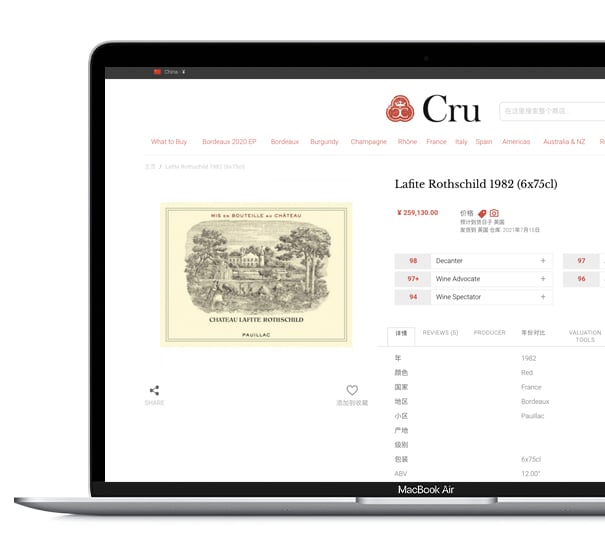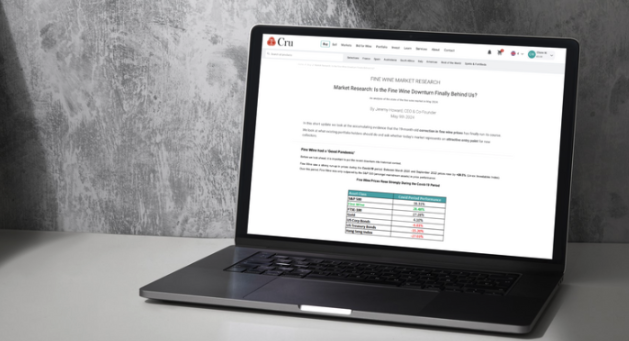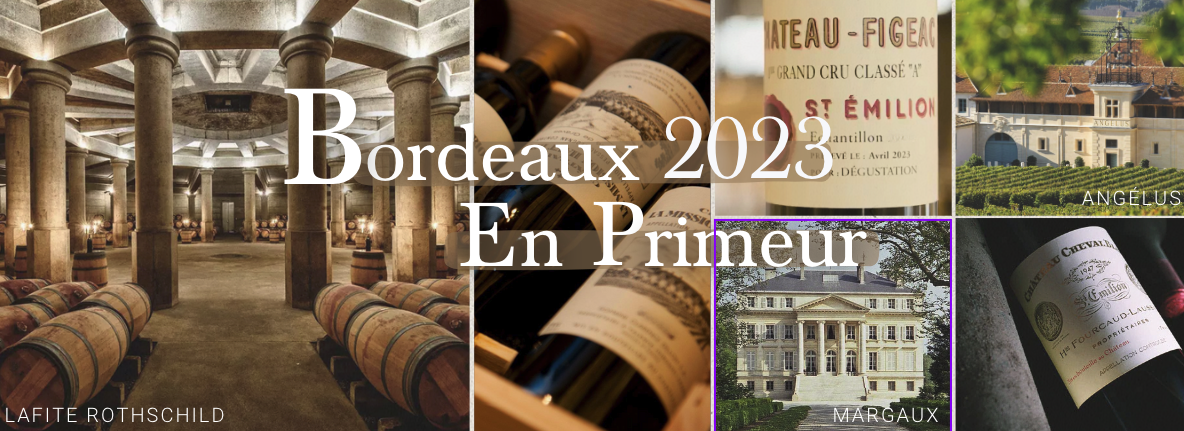In this short update we look at the accumulating evidence that the 19-month-old correction in fine wine prices has finally run its course.
We look at what existing portfolio holders should do and ask whether today's market represents an attractive entry point for new collectors.
Fine Wine had a 'Good Pandemic'
Before we look ahead, it is important to put the recent downturn into historical context.
Fine Wine saw a strong run-up in prices during the Covid-19 period. Between March 2020 and September 2022 prices rose by +28.5% (Liv-ex Investables Index). Over this period, Fine Wine was only outpaced by the S&P 500 (amongst mainstream assets) in price performance:
Fine Wine Prices Rose Strongly During the Covid-19 Period
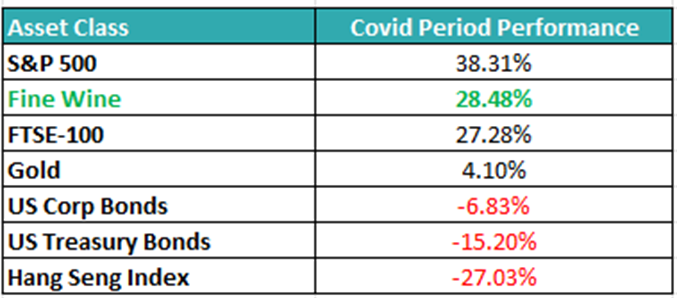
Performance Mar. 2020 to Sept. 2022
Important to note that +28.5% was only the average price increase for the overall market. A large number of wines, most notably top Burgundies and some Champagnes, increased by significantly more than this. So as the pandemic came to an end, and the 'stay at home' craze for online trading subsided, a number of products were in an exposed position.
A Modest Correction was Overdue
Since the market peak in September 2022, Fine Wine prices have retrenched somewhat. To the end of April 2024, the Liv-ex Investables index is down -14.9% from its Sept. 2022 high. It is worth noting, however, that Fine Wine prices are still +9.3% above their pre-Covid levels.
It is important for collectors to understand that mild pullbacks of this kind are a normal feature of modern Fine Wine markets. Prices tend to gap higher (as they did in 2020-22) before hitting an air pocket and dropping back modestly to find a new support base. Over the past decade, there have been three such market cycles, each lasting around 15-19 months and each resulting in a decline of around 10-15% (following a period of strong performance leading up to it).
The previous correction cycle - which ended in April 2020 - lasted 19 months, exactly the same duration as the current downturn:

Signs of a Market Bottom
Over the past month, clear signs have emerged that the Fine Wine market is bottoming. The broad index (Liv-ex Investables) recorded a gain in March 2024 for the first time in over a year. April saw a renewed small correction, but the trend is clearly of a market finding support at current levels:
Fine Wine Broad Index looks to be Bottoming
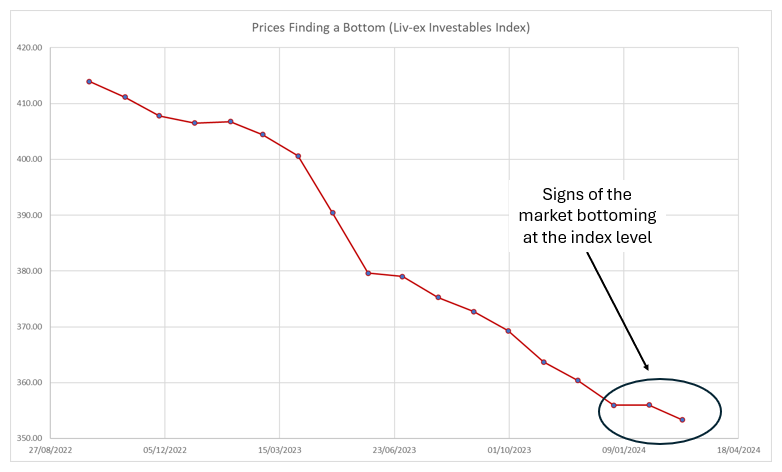
A number of benchmark wines – those we would expect to lead in a new bull market – have already bounced well off their lows and started moving higher.
Names like Cristal 2008, Cos d’Estournel 2016, Tignanello 2020 and Pontet-Canet 2019 have all seen double-digit gains in just the last couple of weeks:
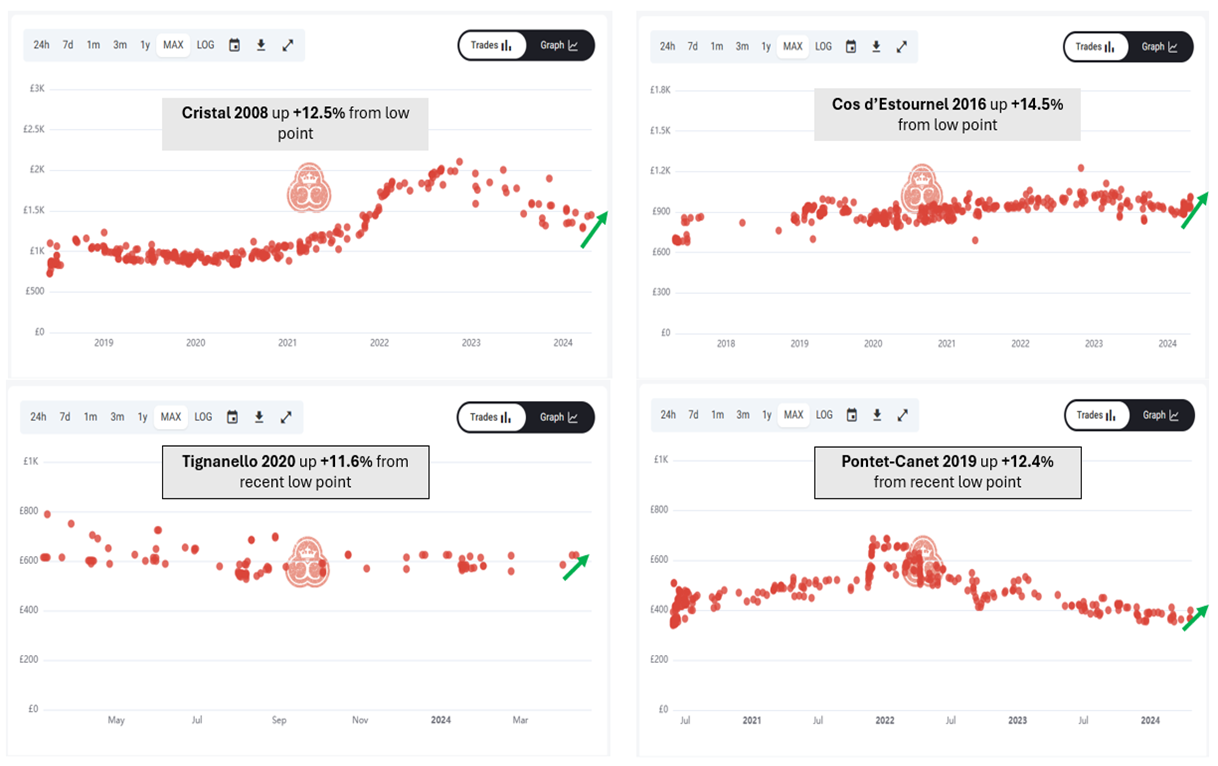
All data based on real trades on Cru World Wine
Solid Gains Follow Market Bottoms
With the broader market now bottoming and many benchmark names already well off their lows, our attention turns to what happens next. If recent history is anything to go by, we should see a period of solid price gains over the next couple of years. In the three years following the last cycle bottoms, gains of +26 to +32% occurred over the following three years. And of course, many of the best wines did much better than this.

A Time to Add to Positions
None of the fundamentals for the Fine Wine have changed. They never do. There will never be enough of the world’s greatest wines to satisfy global demand because their supply cannot be increased.
If the pattern of history is repeated (and there is strong evidence that it will be), this current market represents a good entry point. There are still some distressed sellers out there, and we are still able to pick up wines at bargain prices for our Managed Portfolios. Some of the early-stage gains have already been made by nimble traders, but there is plenty of time for a broader portfolio to deliver solid gains through the next three years at least.
It is always worth zooming the camera out to the see the long view. Since 1988 Fine Wine has still outperformed all major asset classes in price performance:
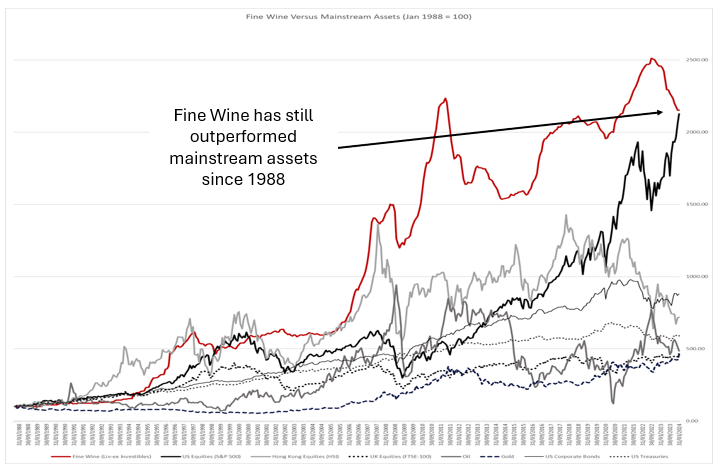
For anyone with a medium-term timeframe, this looks like a decent time to be moving capital into Fine Wine markets.



